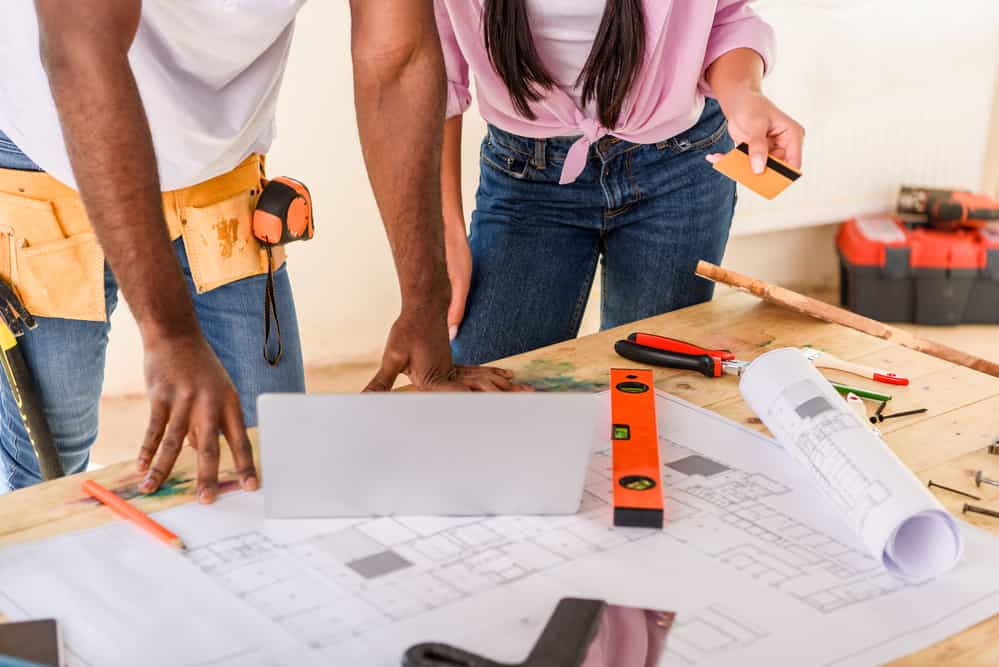Most shop owners have a trepid approach towards shop renovations, and almost always, the reason behind that fear is the cost.
When you buy certain items , you understand that they won’t be worth even half of their original price down the line. Some of the fixtures you purchase are investments that also depreciate. Still, you hope they generate enough income to make a positive return on that investment.
So, when it comes to shop fitouts, when done right, a renovation can provide a good ROI, whether that be for your retail business, or from the perspective of a commercial property investment.
It’s important to carefully evaluate the expected return on investment (ROI) of your fitout – not just as a financial outlay, but as a strategic investment in your brand. Some features can significantly influence customer perception and revenue, while others may offer limited value. Prioritise spending on elements that deliver the greatest impact and consider scaling back on less important areas. If upfront costs are a concern, a business loan could be a viable option.
So how do you renovate the right way? It can seem daunting, but by following our easy ‘dos and don’ts’ guide, along with some patience, you’ll already be well on your way to creating a fantastic new fitout which will help to boost your brand and increase your revenue.
Shop Renovations: The Dos
DO plan ahead for everything.

Successful shop renovations are well-thought-out shop renovations. And trust us when we say, you have a lot of planning to do.
When you are going through your planning process, first and foremost, you must create a budget for your renovation project. Be realistic about what you can – and can’t – afford before setting your overall budget.
And make sure the fitout company you appoint understands your budget and can work with it. A good shop fitout specialist will know how to maximise your budget. They’ll be able to advise on the areas where you need to invest more heavily and those where you can cut corners, or find cheaper solutions for.
Once you’ve set the budget, work with your shopfitters to establish a timeframe. This is perhaps the most crucial part of any renovation process. Remember, the longer your shop is closed for renovation, the higher the financial cost through lost revenue Having a timeframe in place will help to keep people accountable and on schedule.
An experienced shopfitter will have a reliable process in place for ordering materials, arranging logistics and scheduling in contractors, such as electricians and plumbers.
However, there might be additional products and materials, which you will want to source yourself – such as soft furnishings and ornamental pieces – which you may want to install. Where possible, buy these in advance to avoid delays. You don’t want to be rushing around at the last minute trying to source the right colour cushions or artwork.
DO add a buffer to your budget.
Remember to add a buffer to your budget.
Things can go wrong in even the most meticulously planned renovations. And the bigger the scale of the remodel, the higher the chances of something goeing wrong. So, having a contingency plan in place is vital.
Don’t even consider skipping this step; be prepared and add a buffer of at least 10% to 30% to your overall budget.
DO take spatial planning seriously.

Space planning is the first and most critical component of any shop fitout design process.
It involves careful analysis of how the physical space can best be used for optimal functionality. You’ll want to maximise the space you have and ensure its easy to navigate and is sympathetic to existing structures and sources of natural light.
In-depth analysis of physical space and its use, as well as correlation to structures and natural light is fundamental to creating easy to navigate, well-balanced and functional areas. This in itself is the very definition and essence of space planning.
Your shop should be a pleasant environment for both your customers and your employees – and a well-designed floorplan is crucial to this.
DO choose quality over price.
Shops renovations aren’t a yearly thing, rather more of a decade thing. Therefore, it stands to reason that the choices you make now will impact your business for the next few years. So, it’s important to consider possible future changes to your business and future-proof your fitout.
And don’t think about skimping where it matters. Items that are the easiest to wear down, such as flooring, for example, are things you should spend big on. Opt for quality over price, as quality items tend to last longer. While it may hurt your budget now, it’ll generally turn out to be the most cost-effective solution in the long-run – and you’ll be thanking your past self for the wise decision down the line.
DO hire professionals.
While we are all for DIY, we don’t think it’s good to take this approach to specialist jobs, such as electrical work or tiling.
Do yourself a favour and hire the best experienced – and licensed person for the job, especially if it has anything to do with wiring and electrical, which can be dangerous if you’re not fully-qualified. Trust us; it isn’t worth the risk.
If you are keen on contributing your labour and want to be directly involved in the renovation, go for small-scale, easier tasks, such as demolition, painting or furnishing.
The remainder of your energy should be spent on project management and ensuring all necessary materials and products arrive on time.
Shop Renovations: The Don’ts
DON’T underestimate the scope of your project.
We understand that things don’t always go according to plan and you can’t know exactly how long the renovation will take.
Still, there is something you can do. Take your best guess regardless, and now multiply it by two, or rather make it three. Voila, you now have a more accurate estimate of how long it’s likely to take.
Shop renovations take time and everything must be done in the correct order. What often happens, is that one professional can’t start work until the previous one has completed theirs. As the project manager of your renovation, you need to have a keen understanding of time requirements and management to ensure everything sails smoothly.
DON’T overspend.

When you are very financially stable, it may be very tempting to create your dream shop with only top-of-the-line products. However, this isn’t always a good idea, especially if you’re unsure of how long you’ll be in your current premises.
If you own the premises, pay extra attention to the property value and renovate in accordance with that. Don’t over-capitalise; you can’t be spending any money that you won’t be able to recoup later if you should decide to sell.
DON’T prioritise style over functionality.
Admittedly, it’s very easy to get carried away by all the latest trends, designs, and products on the market. Chances are, many things have changed since your shop first opened for business.
But don’t risk losing functionality and practicality; stay level-headed and avoid making decisions based purely on aesthetics. Yes, your shop needs to look amazing, but it also needs to be functional.
Think of both your customers and employees and anticipate their needs. If you are indecisive on what to prioritise, then the best thing you can probably do is find some middle ground between them. Or, if you have appointed a good fitout designer, they will be able to take care of those decisions for you.
DON’T always follow current trends.
Most of us are a sucker for trends. If you are one of those people, you probably want to introduce all of the latest interior design trends to your shop.
But it’s important to remember; no trend lasts forever. Some can stick around for years, while others can fade away in one summer. If you’ve already made up your mind and want to implement a particular trend, there are 3 main things to consider:
- How much will it cost? If the feature only accounts for a tiny portion of your budget, then it might be worth going ahead with it. But some trends – such as high-tech lighting systems, or giant LED displays – might be cost-prohibitive. Consider the cost and be practical in your decision-making.
- How will it impact the functionality of your shop? If the implementation of a particular feature would hinder the flow of foot-traffic, or the overall functionality of you shop, then it’s a no.
- Will it date easily? Think to yourself about how it will look a year, 5 years or a decade down the road. Generally, the wilder and wackier a trend, the less it’s likely to stick around.
Final Thoughts
So, there you have it. Our top ‘dos’ and ‘don’ts’ for shop renovations. If you’d like to speak to someone about a shop fitout or renovation, please contact the friendly team at LKD Fitouts. We’d be delighted to arrange a free consultation.






